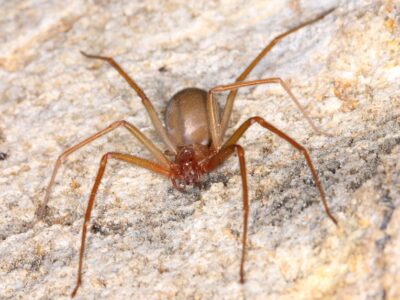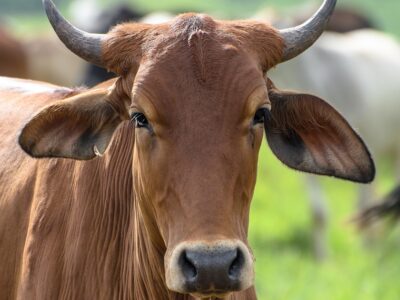Below you can find a complete list of Venezuelan animals. We currently track 302 animals in Venezuela and are adding more every day!
Venezuela is one of the most biodiverse countries on the planet because it spreads across so many geographically diverse habitats. Among Venezuelan animals, you’ll find the crocodiles of the Orinoco Delta, the Spectacled Bear of the Andean highlands, the capybaras of the Llanos plains, the monkeys and sloths of the Amazon basin, and the Scarlet Ibis of the Caribbean coast. More than 4,000 species of animals live in Venezuela, including more than 350 discrete mammal and reptile species, more than 1,400 avian species, and nearly 2,000 marine species. Animals native to Venezuela include jaguars, the crab-eating fox, the giant anteater, and the giant otter.
The Official National Animal Of Venezuela
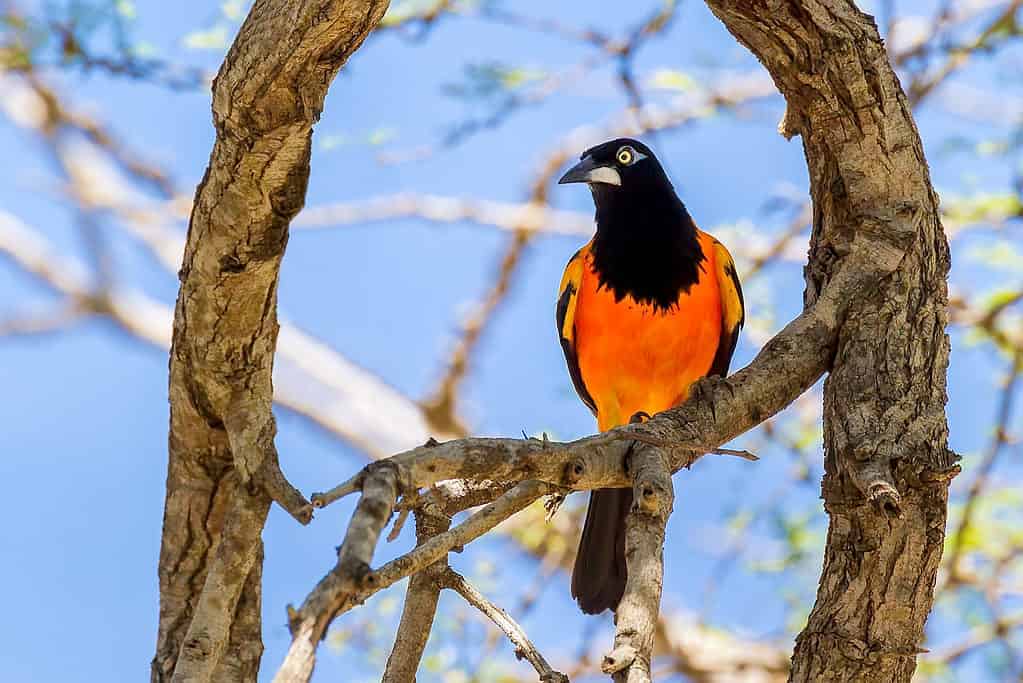
Troupials live in nests but they don’t build nests, they steal them!
©Ben Schonewille/Shutterstock.com
The national animal of Venezuela is the troupial (Icterus icterus), a member of the oriole family. These black-headed, orange-bodied birds are found throughout Venezuela’s drier forests and grasslands and are also known as bugle birds. Properly speaking, troupials are animals native to this country but they’re also found in Colombia and some Caribbean islands.
The troupial is not a social bird and will defend their territory very fiercely. They do not build nests but prefer to use the nests of other birds as their own.
Where To Find The Top Wildlife In Venezuela
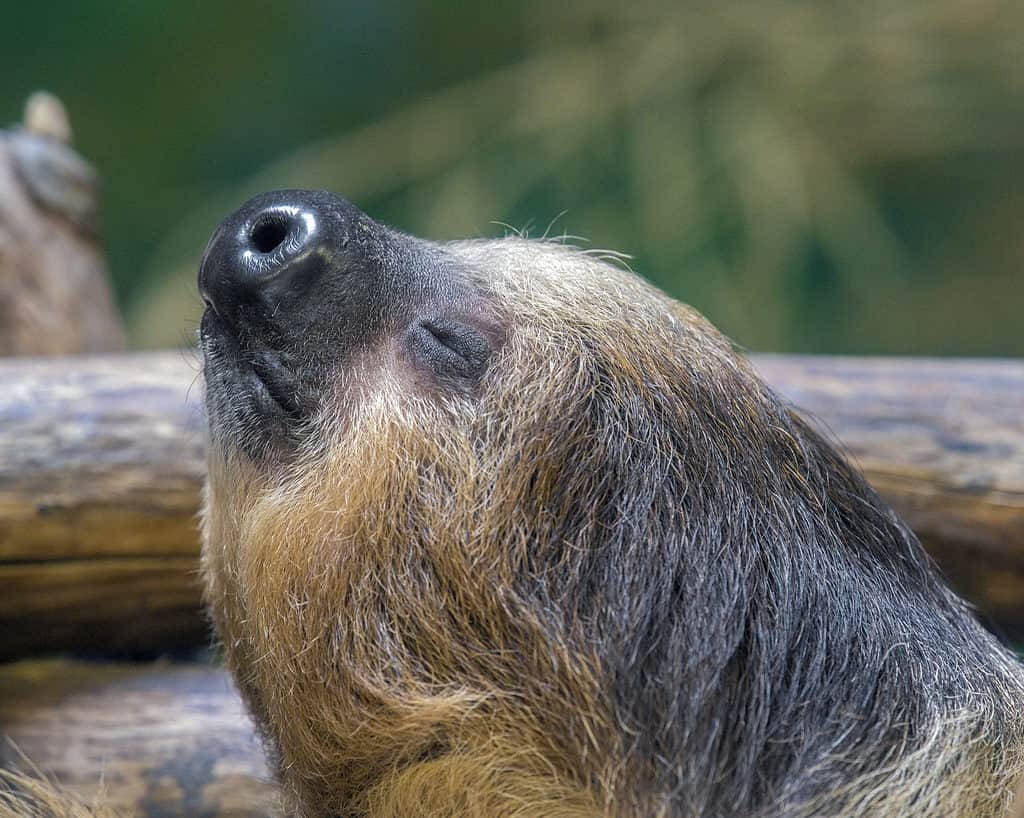
The sloth’s relaxed vibe might just be contagious!
©iStock.com/Christopher R Mazza
More than 20 percent of the country is comprised of national parkland where animals can flourish. National parks are mostly found in the country’s mountainous and coastal regions. Canaima National Park, home to Venezuelan animals such as the giant armadillo, the cougar, the jaguar, and the two-toed sloth, is a UNESCO World Heritage Site.
Canaima National Park, or Parque Nacional Canaima, is located in Bolivar, in southeastern Venezuela, and is bordered by Brazil and Guyana where it spreads over 7 million acres. Of the 43 national parks, this is the main one. It is home to the highest continuous waterfall in the world, Angel Falls, at 3,211 feet high. At Canaima, in addition to the numerous activities, you will find the two-toed sloth.
The two-toed sloth is typically found in Central and South America and can be found in the tropical rainforests of Venezuela. They reside in the trees, where they spend most of their time eating twigs, buds, and leaves. They spend an average of 15 to 20 hours a day sleeping.
The Most Dangerous Animals In Venezuela Today
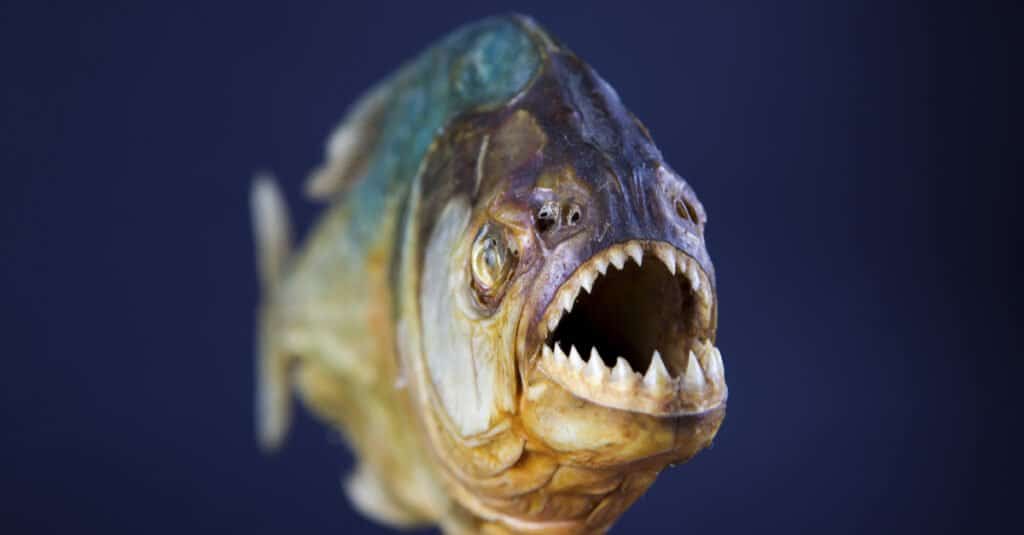
There is little scientific data to show that the piranha has ferociously attacked a human.
©simongee/Shutterstock.com
The jaguars that roam the Amazonian jungles and the piranhas that swim in Amazonian streams are among the most dangerous animals in this country. Venezuela has its share of poisonous snakes, too, such as the Venezuela Coral Snake and the Horned Palm Viper.
While the total number of species of piranha is unknown, Venezuela is home to 13 species of piranhas that are found in five out of the seven freshwater basins in the country. Also known as caribe, they have incredibly sharp teeth and despite their reputation, can be omnivorous as well as carnivorous. The average size of this fish is 6 to 10 inches in length and their single row of sharp teeth is used for quick puncturing.
Endangered Animals In Venezuela
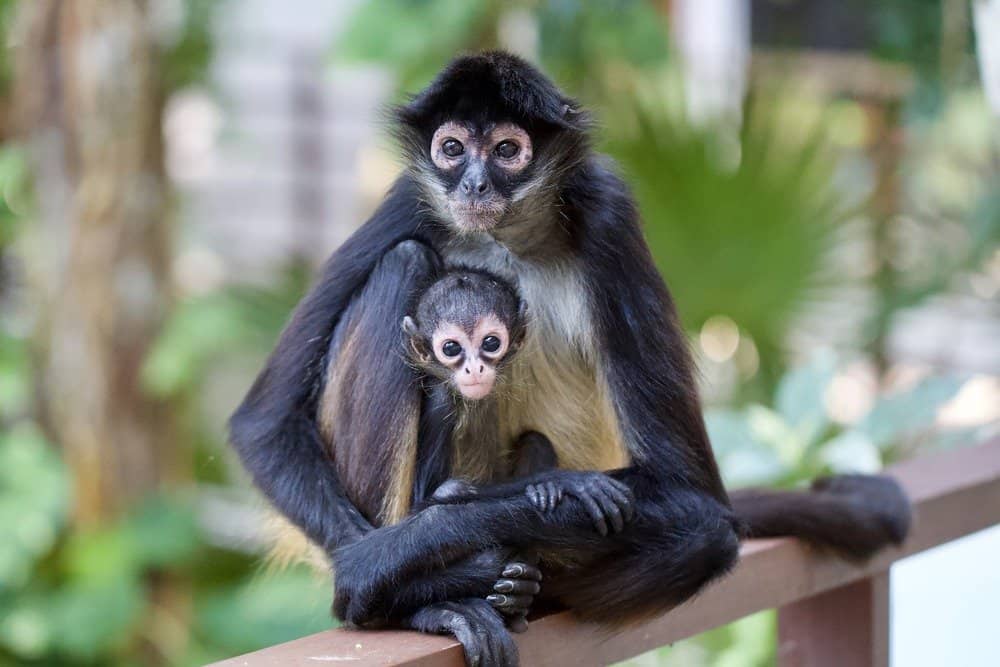
The brown spider monkey is critically endangered.
©StanBullett/Shutterstock.com
More than 50 percent of Venezuela’s unique avian and mammalian species can be found in the Amazonian forests south of the Orinoco Delta. Many of these species are at risk of becoming extinct in Venezuela because of habitat destruction related to the oil industry. Other animals facing extinction are the giant armadillo and the giant otter. Though more than 20 animals here are in danger of becoming extinct, there is no definitive list of extinct animals in Venezuela.
The brown spider monkey is found in the forests of northwestern Venezuela and is listed as critically endangered. As one of the 25 most endangered primates, their numbers are decreasing due to illegal hunting and loss of habitat. They have an average lifespan of 27 years in the wild. Like humans, this monkey likes to greet members of its species with hugs.
Rarest Animal In Venezuela
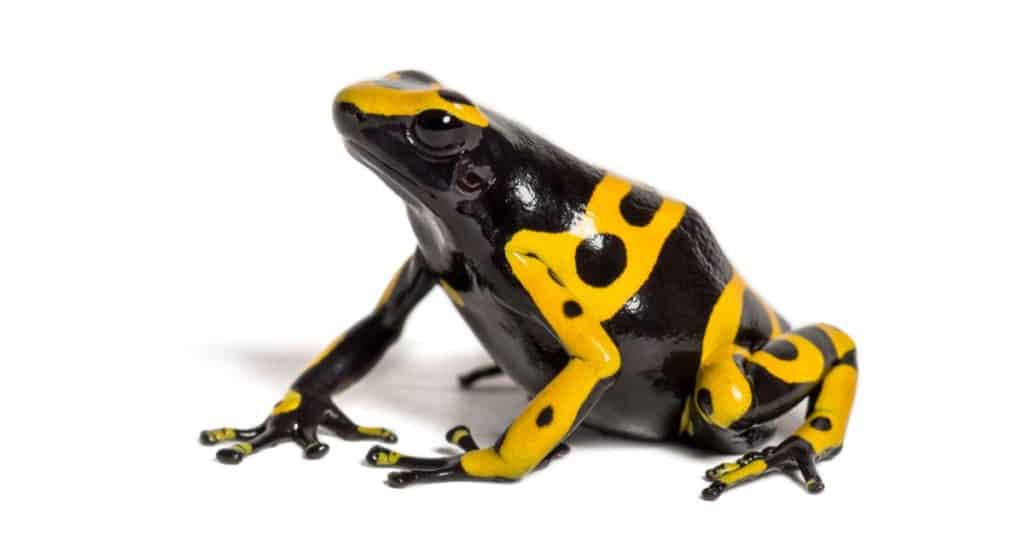
Poison dart frogs are threatened by climate change.
©Eric Isselee/Shutterstock.com
The poison dart frog, like many frogs and toads of its species, is currently threatened by climate change and is becoming increasingly rarer to see. Because Venezuela has such a diverse rainforest and coastal habitats, it is a great location for these amphibians to call home but rising temperatures are increasing the difficulty of reproduction, which may cause their numbers to fall off.
Largest Animals In Venezuela

The cute capybara is the largest rodent.
©wushoung wang/Shutterstock.com
The capybara is not only the largest rodent in Venezuela but in the world. Also known as the water hog and the carpincho, this rodent grows up to 4.3 feet in length and can weigh up to 174 pounds. It lives in forests and wetlands and has a lifespan of 8 to 10 years. Jaguars have lost more than 40% of their natural territory. ©Pedro Helder Pinheiro/Shutterstock.com
The jaguar falls into two categories – the rarest and largest animal in Venezuela – and is currently listed as a near-threatened species. They have lost more than 40 percent of their natural territory and have disappeared from many areas. It is believed that there are around 4,000 of these big cats remaining in the country. The average size for a male is 209 pounds, females are 124 pounds.
Flag Of Venezuela

The 8-star Flag of Venezuela was introduced in 2006.
©iStock.com/Primada
The flag of Venezuela is a horizontal tricolor of yellow, blue, and red, with eight stars at the center of the blue stripe. This design dates to the original flag that was introduced in 1811 during the Venezuelan War of Independence. The colors represent the nation’s independence, courage, and wealth of the country. The eight five-pointed stars that are featured on the center of the flag represent the eight provinces – Barcelona, Barinas, Caracas, Cumana, Guayana, Margarita, Merida, and Trujillo.
Venezuelan Animals
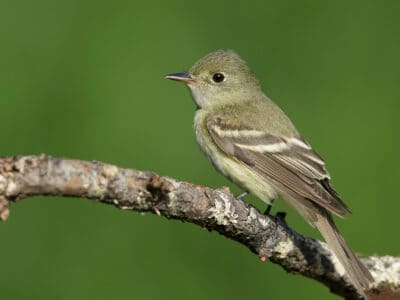
Acadian Flycatcher
Their nests are sloppily held together and have an abandoned appearance

Agouti
The agouti is one of the only animals that can crack open Brazil nut pods!

Amazon Parrot
These parrots can be trained to be "talking birds" that mimic human speech
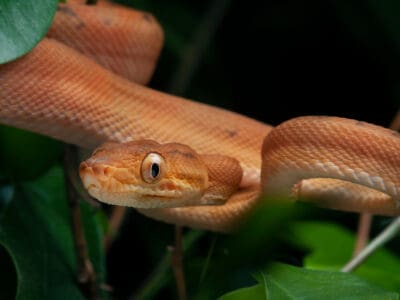
Amazon Tree Boa
Amazon tree boas come in a rainbow of colors.

Amazonian Royal Flycatcher
They use their bright royal-looking crests during mating season

Anaconda
They are the heaviest snake in the world

Anhinga
Their name means snake bird

Ant
First evolved 100 million years ago!
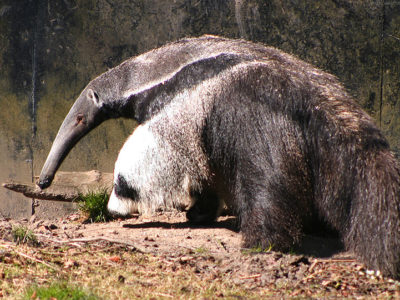
Anteater
Has the longest tongue of any animal in relation to its body size!
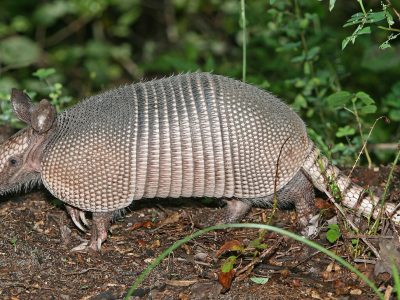
Armadillo
Can curl into a hard, protective ball!

Armyworm
They are so named because they "march" in armies of worms from one crop to another in search of food

Aruba Rattlesnake
This rattlesnake only lives on the island of Aruba.
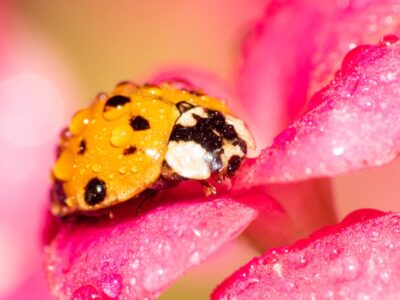
Asian Lady Beetle
Asian lady beetles infest indoor spaces, but they do not reproduce indoors.

Barb
There are over 1768 known species!
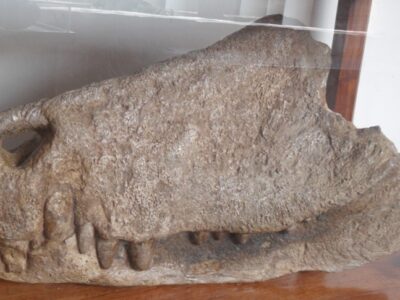
Barinasuchus
Largest terrestrial predator of the Cenozoic era

Barn Owl
Found everywhere around the world!

Barn Swallow
Older offspring help care for new hatchlings.
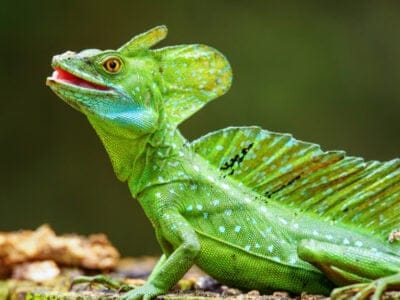
Basilisk Lizard
Can run/walk on water.

Bat
Detects prey using echolocation!

Bear
There are 8 different species!

Bed Bugs
Bed bugs feed for 4-12 minutes.

Bee
Rock paintings of bees date back 15,000 years

Beetle
There are more than 350,000 different species

Bird
Not all birds are able to fly!

Biscuit Beetle
The biscuit beetle form a symbiotic relationship with yeast
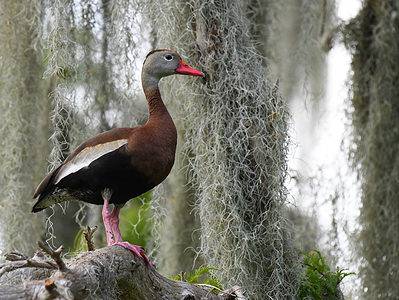
Black-Bellied Whistling Duck
They have bright pink bills.

Black Widow Spider
They typically prey on insects!
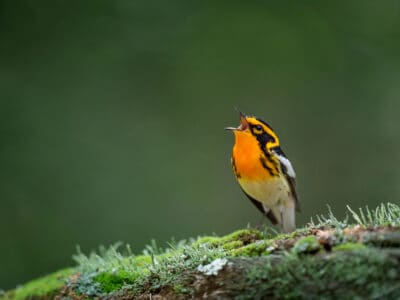
Blackburnian Warbler
They are the only songbird in North America with an orange throat!
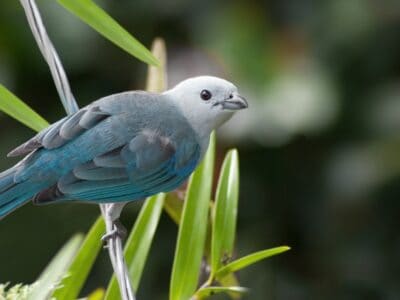
Blue Tanager (Blue-Grey Tanager)
They travel and forage in pairs or groups
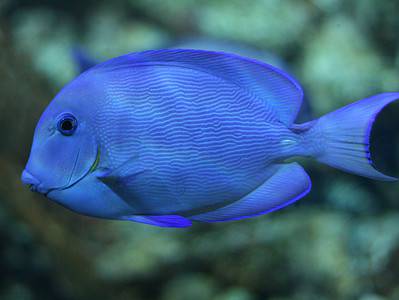
Blue Tang
One of the most colorful members of the genus Acanthurus

Booby
Seabirds found across the South Pacific!

Brazilian Treehopper
“Mild-Mannered Minimonsters”

Brown Dog Tick
Can live its entire life indoors

Burrowing Owl
The burrowing owl lives in underground burrows
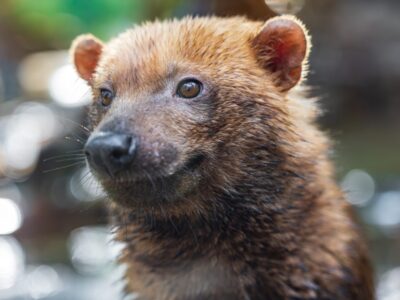
Bush Dog
Bush dogs have webbed toes to help them swim.

Butterfly
There are thought to be up 17,500 species!

Caecilian
Some species' babies use their hooked or scraper-like teeth to peel off and eat their mother's skin
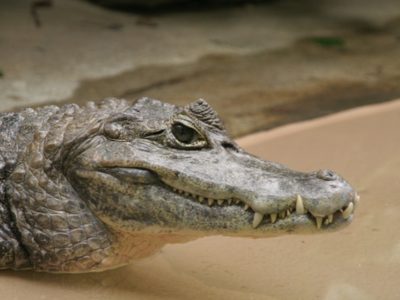
Caiman
Can grow to up 6 meters long!

Camel Cricket
The camel crickets that are found in the USA are light brown in color. They also have dark streaks all over their body.

Canada Warbler
These birds travel more than 3,000 miles during migration!

Capybara
Excellent at both diving and swimming

Carpenter Ant
Carpenter ants can lift up to seven times their own weight with their teeth!

Cat
May have been domesticated up to 10,000 years ago.

Caterpillar
The larvae of a moth or butterfly!

Catfish
There are nearly 3,000 different species!

Centipede
There are about 3,000 documented species!
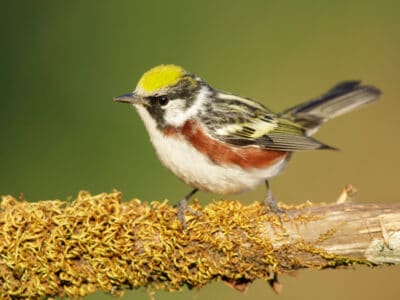
Chestnut-Sided Warbler
They inhabit regrowing forests

Chicken
First domesticated more than 10,000 years ago!
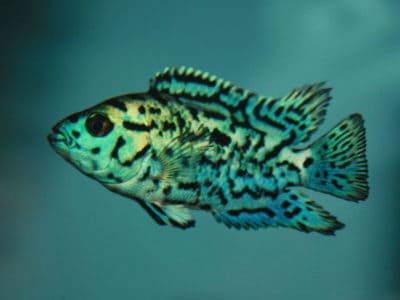
Cichlid
There are more than 2 000 known species!

Coati
Found in dense forests and wet jungles!

Cockroach
Dated to be around 300 million years old!

Codling Moth
Pupae are able to undergo diapause to survive poor fruit yield years and winter.
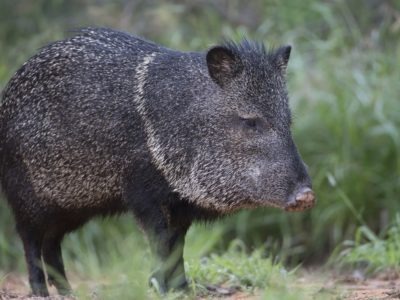
Collared Peccary
Form bands of up to 12 individuals!

Common Furniture Beetle
The common furniture beetle feeds exclusively on wood

Common House Spider
House spiders have the ability to eat most insects in a home.

Coral Snake
There are over 80 species of coral snake worldwide.

Cormorant
They can fly 35 mph and dive 150 feet below water.

Cow
There are nearly 1.5 billion worldwide!

Crab
There are 93 different crab groups
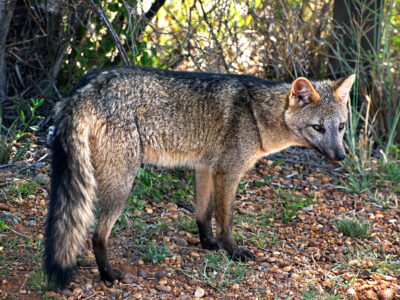
Crab-Eating Fox
The crab-eating fox is extremely adaptable, living in all sorts of habitats and eating almost any available food.

Crab Spider
Crab Spiders can mimic ants or bird droppings

Cricket
Male crickets can produce sounds by rubbing their wings together

Crocodile
Have changed little in 200 million years!

Crocodylomorph
Crocodylomorphs include extinct ancient species as well as 26 living species today.

Crow
A group of these birds is called a Murder.
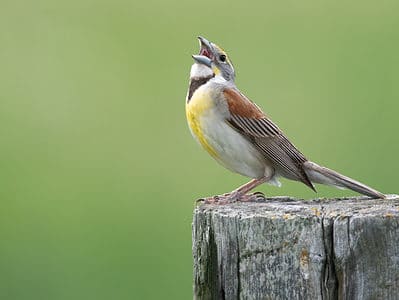
Dickcissel
They have a unique call that they are named for.

Dog
First domesticated in South-East Asia!

Dog Tick
Dog ticks feed on dogs and other mammals

Donkey
First domesticated 5,000 years ago!

Dragonfly
It's larvae are carnivorous!
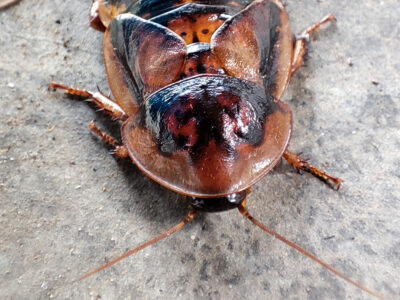
Dubia Cockroach
The most popular species of feeder roach

Duck
Rows of tiny plates line their teeth!

Dung Beetle
The dung beetle can push objects many times its own weight
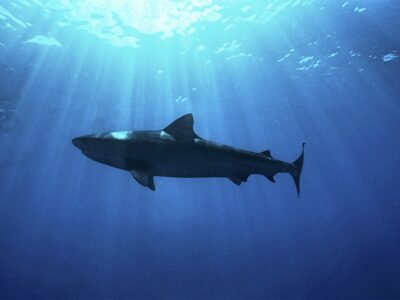
Dusky Shark
The Dusky Shark sometimes eats trash discarded by humans.
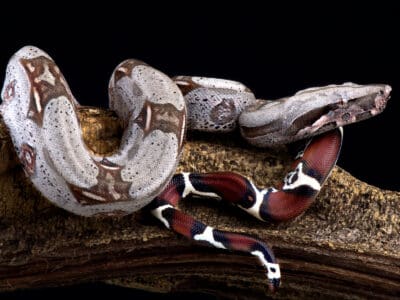
Dwarf Boa
Some species can change color from dark to light, and back again.

Eagle
Has exceptional eyesight!

Earthworm
They are hermaphrodites, which means they have male and female organs

Earwig
There are nearly 2,000 different species!

Eastern Meadowlark
They can live up to 9 years.

Eel
Eels can be a mere few inches long to 13 feet!
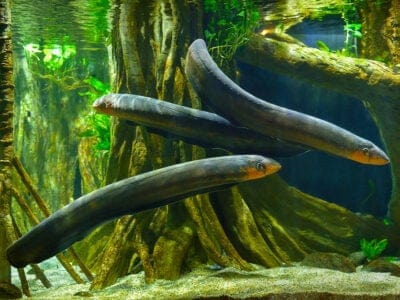
Electric Eel
Despite its powerful shock, electric eels have terrible vision.
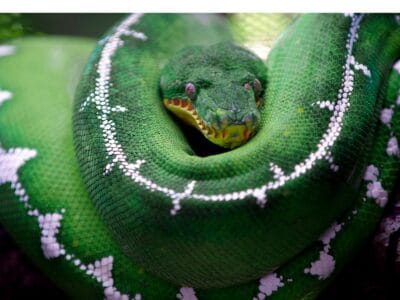
Emerald Tree Boa
Their teeth are as long as a fully-grown reticulated python

Falcon
The fastest creatures on the planet!

False coral snake
The false coral snake mimics both the coral snake and the cobra to scare away predators

False Widow Spider
False spiders actually prey on black widow spiders and other hazardous spiders
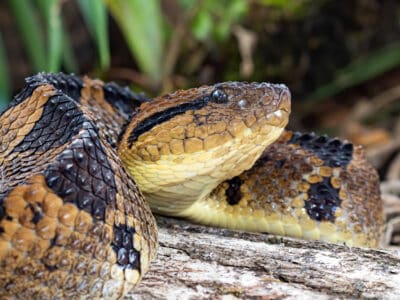
Fer-de-lance Snake
The Most Dangerous Snake in the Americas

Firefly
The firefly produces some of the most efficient light in the world
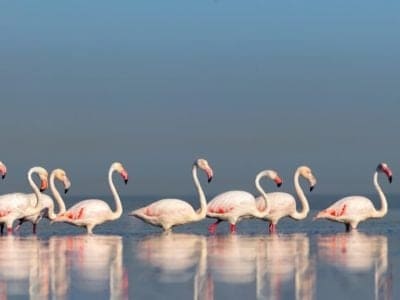
Flamingo
Sleeps on just one leg!

Flea
Adult fleas can jump up to 7 inches in the air

Fly
There are more than 240,000 different species!

Flying Squirrel
Can glide up to 90 meters!
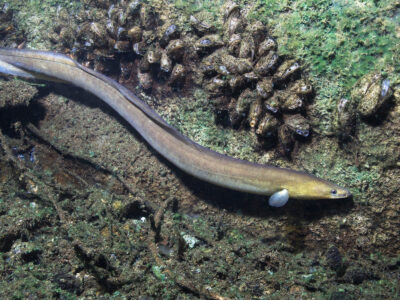
Freshwater Eel
Freshwater eels are actually catadromous, meaning they migrate to saltwater to spawn

Frog
There are around 7,000 different species!
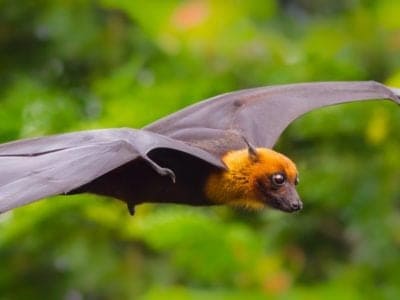
Fruit Bat
Among the largest bats in the world

Fruit Fly
Fruit flies are among the most common research animals in the world
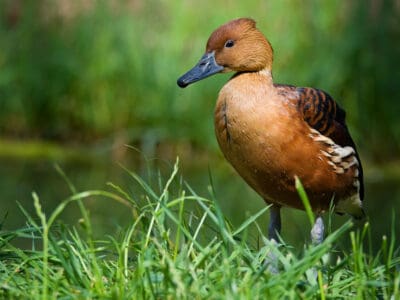
Fulvous Whistling Duck
They build a ramp from their nest, which leads to a nearby water source

Gecko
There are thought to be over 2,000 species!

German Cockroach
The most common type of urban roach
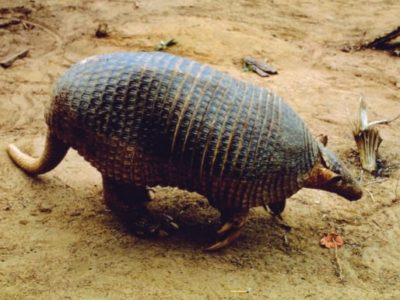
Giant Armadillo
Armadillos have a smell that’s described as strong, sweet and acrid.
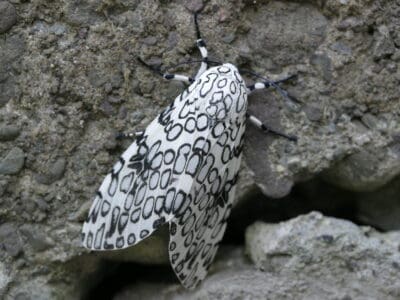
Giant Leopard Moth
When giant leopard moths mate, their mating sessions last over 24 hours.

Glowworm
Found inhabiting dense woodland and caves!

Gnat
Males form large mating swarms at dusk

Grasshopper
There are 11,000 known species!
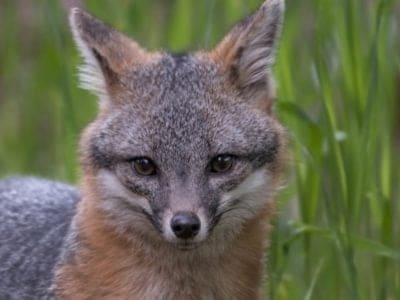
Gray Fox
The gray fox has retractable claws and a rotating wrist that allow it to climb trees with some proficiency
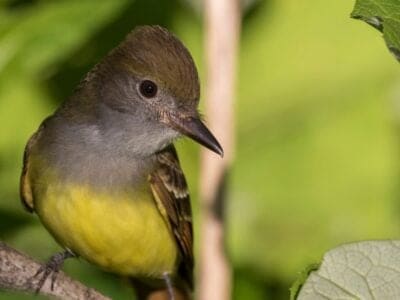
Great Crested Flycatcher
This species makes use of some truly unusual nesting material, including snakeskin and garbage
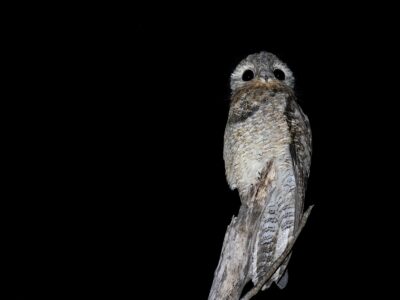
Great Potoo Bird
At night, they make a terrifying low call that sounds like a distressed moan or growl.
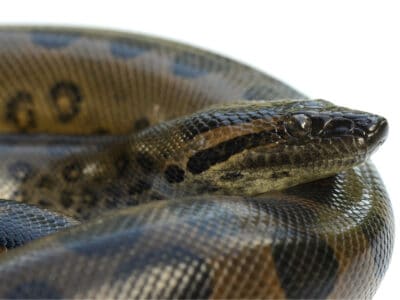
Green Anaconda
Females are often five times longer than males.

Green Bottle Blue Tarantula
The spiderlings look very different than the adults.

Guinea Pig
Natively found in the Andes Mountain range!

Gulper Catfish
Gulper catfish can consume prey twice its size
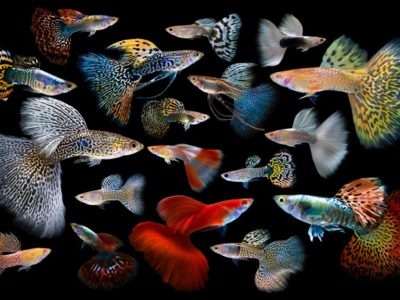
Guppy
Also known as the Millionfish!

Gypsy Moth
One of the most invasive species in the world

Hamster
Able to run as quickly backwards as forwards!

Hare
Can reach speeds of over 50 mph!
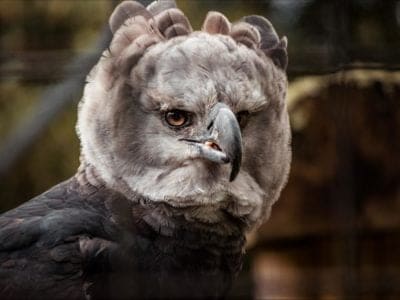
Harpy Eagle
Talon's the size of a grizzly bear's claws!

Harris’s Hawk
Their vision is eight times better than a human's

Hawk Moth Caterpillar
Many hawk moth caterpillars eat toxins from plants, but don’t sequester them the way milkweed butterflies do. Most toxins are excreted.
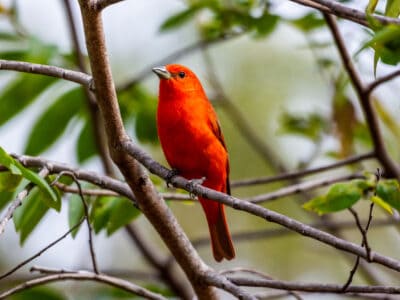
Hepatic Tanager (Red Tanager)
Parents and their young sing sweetly to each other

Hercules Beetle
This dynastine scarab beetle makes a weird huffing sound when it’s disturbed.

Heron
Inhabits wetlands around the world!

Honey Bee
There are only 8 recognized species!
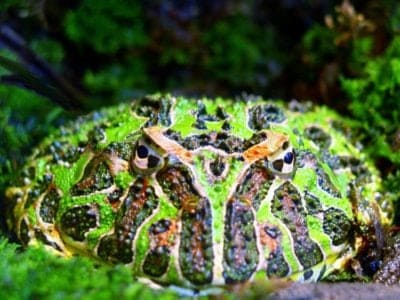
Argentine Horned Frog
Natively found in South America!

Horse
Has evolved over 50 million years!

Horsefly
Horseflies have been seen performing Immelmann turns, much like fighter jets.
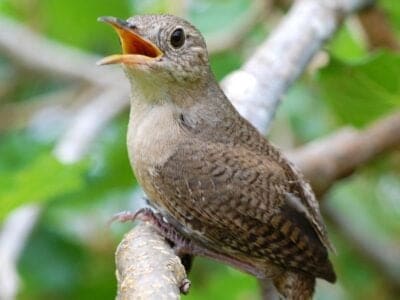
House wren
The wren’s epithet, aedon, comes from a Greek queen who accidentally killed her only son. She was actually aiming for her nephew, and Zeus took pity on her and turned her into a nightingale.

Housefly
The fly has no teeth

Howler Monkey
Spends 80% of it's time resting!

Human
Thought to have orignated 200,000 years ago!

Hummingbird
Beat their wings up to 80 times per second!

Huntsman Spider
Some huntsman spiders have an interesting way of moving around. Some cartwheel while others do handsprings or backflips.

Ibis
Found in swamps, marshes and wetlands!
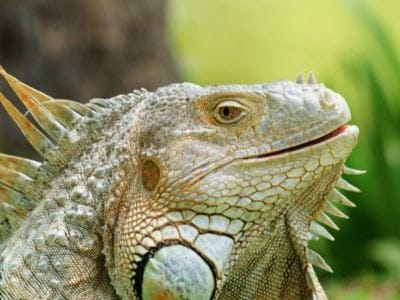
Iguana
Uses visual signals to communicate!
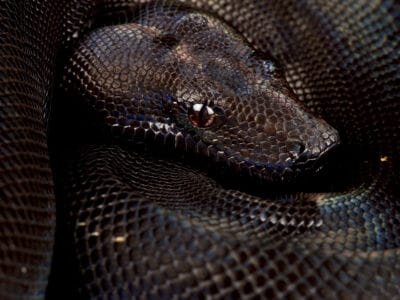
IMG Boa Constrictor
The first IMG boa was born in a litter of anerythristic boas.

Indigo Snake
Indigo snakes use brute force to overpower their prey.

Insects
There are an estimated 30 million species!
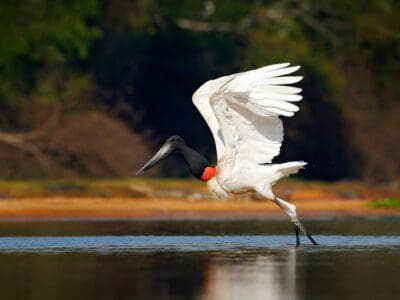
Jabiru
They form lifelong pair bonds and live in groups near water sources.

Jacana
The jacana has the ability to swim underwater

Jack Crevalle
One of the biggest species in the Caranx genus
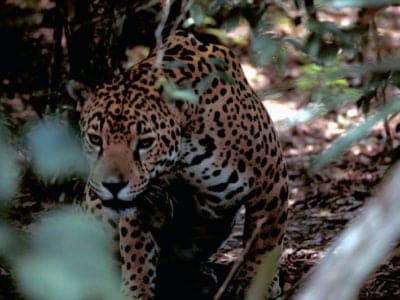
Jaguar
The largest feline on the American continent!

Jumping Spider
Some can jump 50 times the length of their bodies
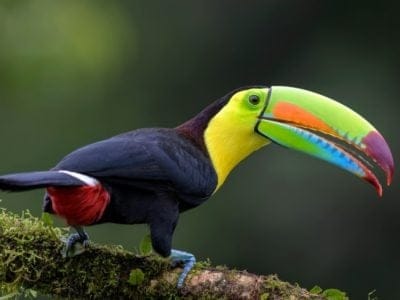
Keel-Billed Toucan
It's beak can reach nearly 20 cm long!

Kentucky Warbler
The Kentucky Warbler appears to wear bright yellow cat-eye glasses!

Keyhole Cichlid
When these fish feel stressed, their skin color will change from yellow-cream to brown.

Killdeer
The killdeer feigns injury to draw a predator away from its nest.

Kingfisher
Inhabits wetlands and woodlands worldwide!
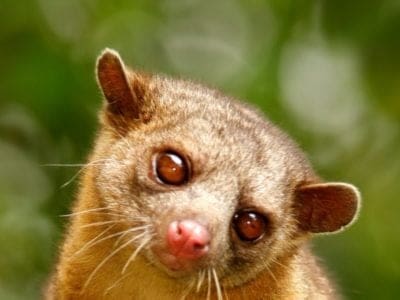
Kinkajou
The kinkajou is a nimble forest-dwelling mammal of Central and South America.

Ladybug
There are more than 5,000 species worldwide!

Leech
Has 10 pairs of eyes!
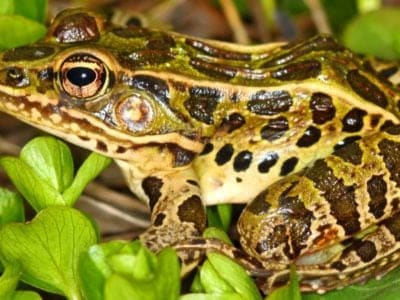
Leopard Frog
They can jump up to three feet
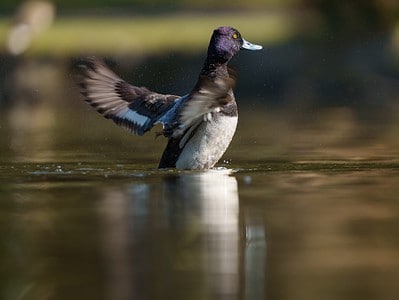
Lesser Scaup
Young lesser scaups learn to dive as soon as their down dries.
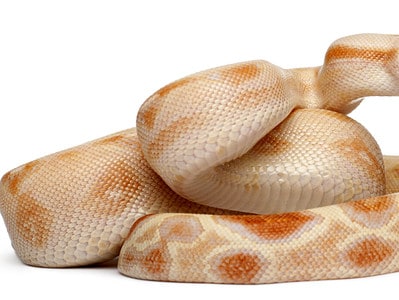
Lipstick Albino Boa
Lipstick albino boas are a designer morph that you'll only find from breeders.

Lizard
There are around 5,000 different species!

Locust
Each locust can eat its weight in plants each day.
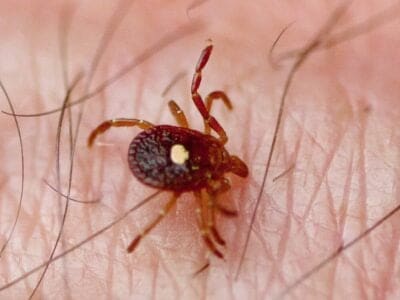
Lone Star Tick
Only females have the ‘lone star’ marking

Macaw
The largest species of parrot in the world!

Maggot
Will only live in wet areas

Margay
Margays are one of the world’s most highly adapted cat species for climbing trees!
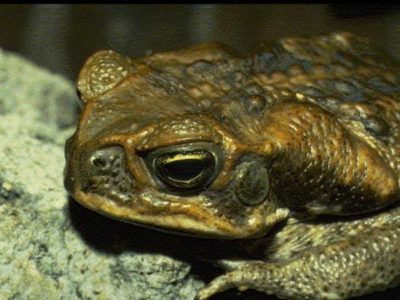
Marine Toad
Produces a toxin used in arrow darts!

Mayfly
There are 2,500 known species worldwide!

Mealybug
They have a symbiotic relationship with ants.
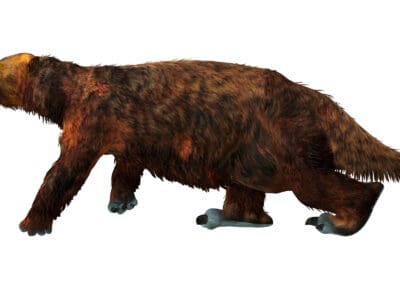
Megatherium
Megatherium probably used its lips more than its tongue when feeling for choice leaves in the treetops.
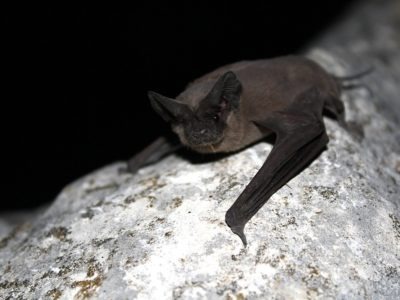
Mexican Free-Tailed Bat
Some colonies have millions of bats

Millipede
Some species have a poisonous bite!

Mockingbird
Mockingbirds are incredible mimics that can learn hundreds of songs!

Mole
Primarily hunts and feeds on Earthworms!

Mole Cricket
Adult Mole crickets may fly as far as 5 miles during mating season and are active most of the year.
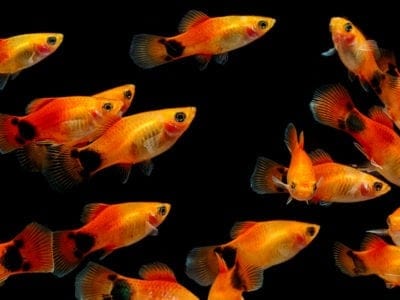
Molly
Known for their calm and peaceful nature!
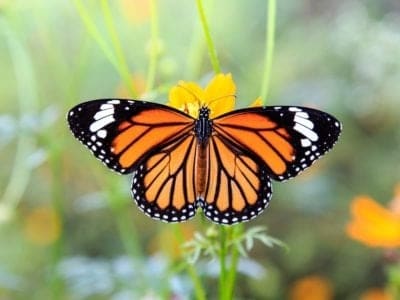
Monarch Butterfly
During migration, Monarch Butterflies may travel 250 or more miles each day.

Mongrel
Has characteristics of two or more breeds!

Monkey
There are around 260 known species!

Moorhen
Feeds on aquatic insects and water-spiders!

Morpho Butterfly
Collectors prize them for their bright wings

Mosquito
Only the female mosquito actually sucks blood

Moth
There are 250,000 different species!
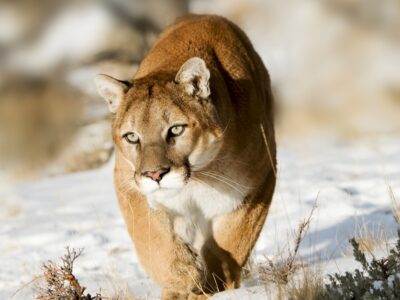
Mountain Lion
Has no real natural predators!
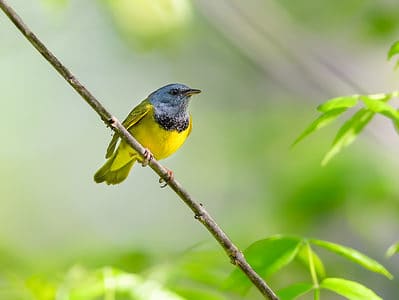
Mourning Warbler
The Mourning Warbler was named for its gray head, which resembles a mourning veil!

Mouse
Found on every continent on Earth!

Mule
The offspring of a horse and donkey parents!
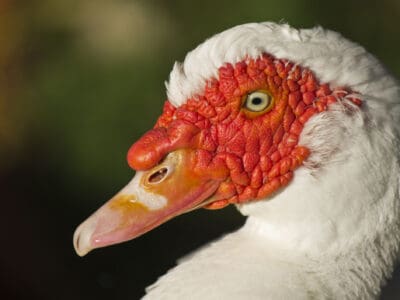
Muscovy Duck
Unlike most duck species, the Muscovy is silent and only makes noise when excited or threatened.

Nematode
Nematodes range in size from 1/10 of an inch to 28 feet long

No See Ums
There are more than 5,000 species.
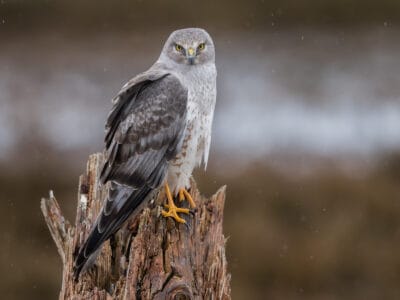
Northern Harrier
They can reach speeds of 25 Mph but prefer to soar low and slow.

Northern Screamer
They are closely related to magpie geese
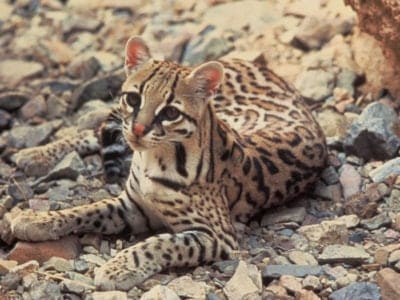
Ocelot
Also known as the Painted Leopard!
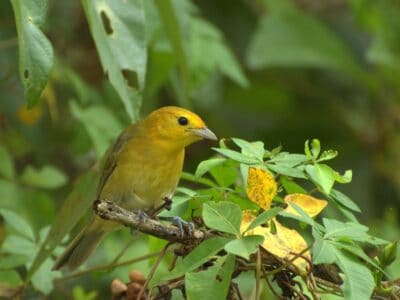
Orange Tanager (Orange-Headed Tanager)
They inhabit the lowlands of the Amazon rainforest

Orb Weaver
Females are about four times the size of males
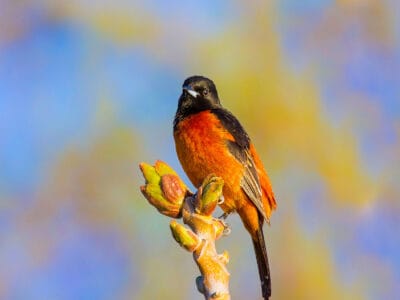
Orchard Oriole
They use rapid wingbeats to hover over foliage as they search for food.

Osprey
They reuse nesting sites for 70 years!

Otter
There are 13 different species worldwide
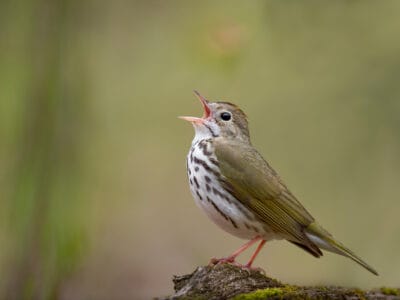
Ovenbird
The ovenbird is named for its unusual nest, which is shaped like an oven!

Owl
The owl can rotate its head some 270 degrees
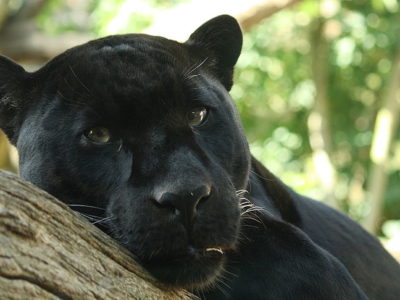
Panther
Prefers to hunt at night than during the day!
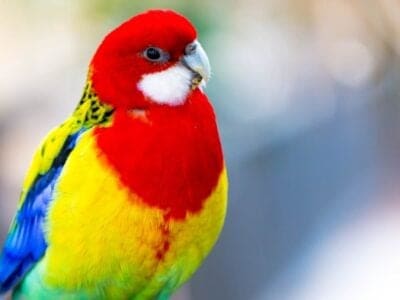
Parakeet
Monk parakeets are the only parakeets that actually build nests. They’re also the only parakeets to nest in great colonies.

Parrot
Can live for up to 100 years!

Parrotlet
Parrotlets aren't the world's tiniest parrot — that would be the pygmy parrot of Australasia.
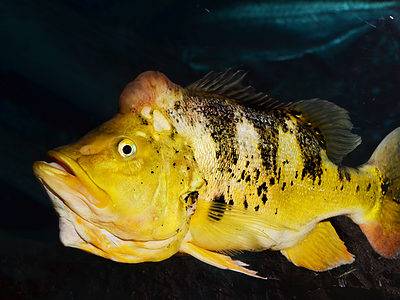
Peacock Bass
Peacock bass is known for their aggressive behavior and predatory instincts, making them a challenging target for sport fishermen.

Peregrine Falcon
Fastest animal on Earth

Pheasant
Females lay between 8 and 12 eggs per clutch!
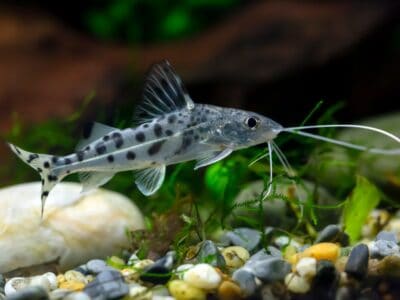
Pictus Catfish
Pictus catfish are social fish that should be kept in groups of 4 or more

Pigeon
They can find their way back to their nests from up to 1300 miles away.
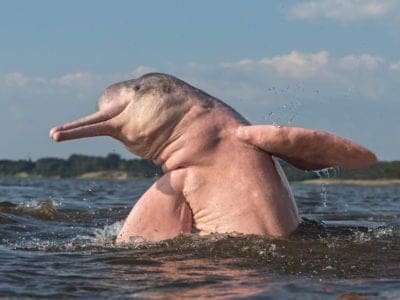
Amazon River Dolphin (Pink Dolphin)
Also known as the 'Pink Dolphin'
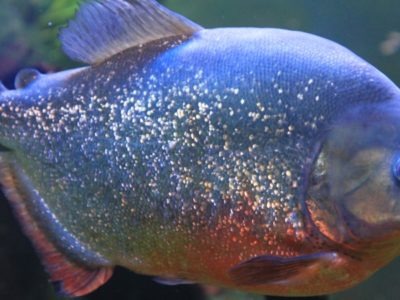
Piranha
Generally found in fast-flowing streams!

Pit Viper
Pit vipers's fangs fold up into their mouths when they don't need them.
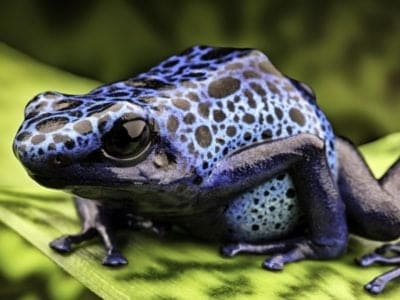
Poison Dart Frog
Inhabits the jungles of Central and South America!

Pompano Fish
They are bottom-feeders

Porcupine
There are 30 different species worldwide!

Praying Mantis
The mantis can turn its head 180 degrees.

Puma
Has longer back legs than front legs!

Purussaurus
Purussaurus had a bite force that is higher than that of any creature that has ever lived

Quail
Inhabits woodland and forest areas worldwide!
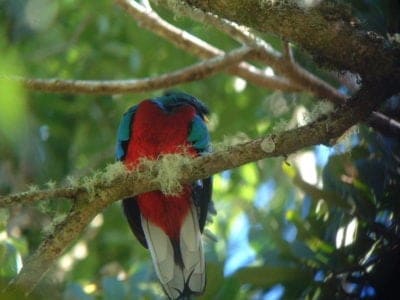
Quetzal
The tail feathers of the male can be 1m long!
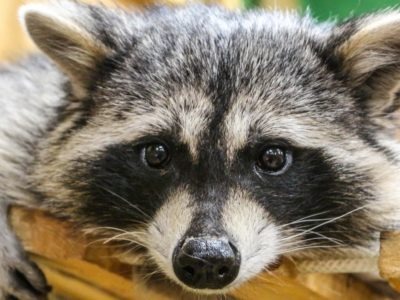
Raccoon
Known to wash their food before eating it!
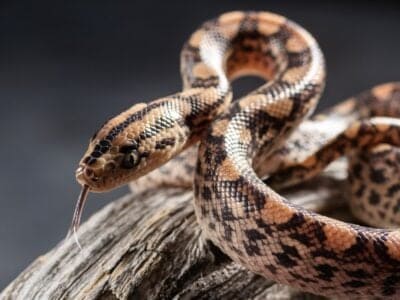
Rainbow Boa
The rainbow boa is named for its iridescent skin that refracts light and creates a rainbow-colored effect.

Rat
Omnivores that eat anything!

Rat Snakes
Rat snakes are constrictors from the Colubridae family of snakes.

Rattlesnake
Rattlesnakes may have evolved their rattle to warn bison away from them.

Red-Footed Tortoise
Male and female Red-Footed Tortoises move their heads to communicate.

Red-handed Tamarin
Red hair on hands on feet!

Redhump Eartheater
The redhump eartheater are very passive fish and do well in aquariums with non-cichlid species
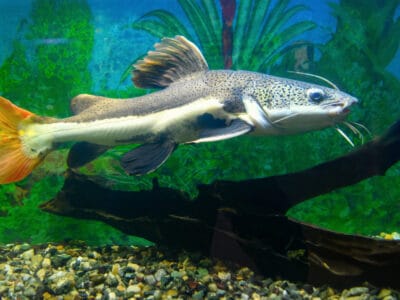
Redtail Catfish
One of three giant catfish species

River Turtle
Inhabits freshwater habitats around the world!

Rodents
The capybara, the world’s largest rodent, likes to be in and around bodies of water. Because of this, the Catholic Church in South America decided that it was a fish, and people were allowed to eat it during Lent and First Fridays.

Rooster
Will mate with the entire flock!
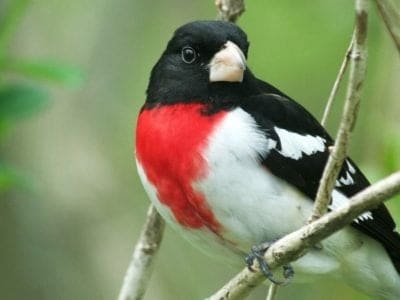
Rose-Breasted Grosbeak
This bird is also called cut-throat because the male looks like his throat has been cut and has bled over his breast.
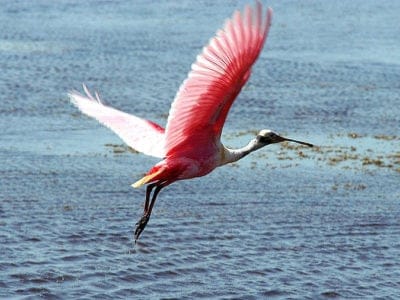
Roseate Spoonbill
The only Spoonbill in the western hemisphere!
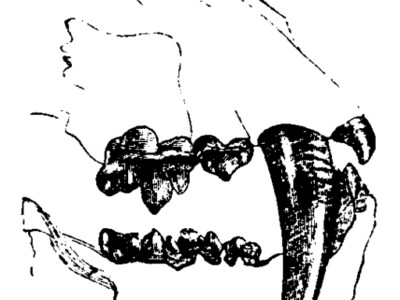
Saber-Toothed Tiger
Canines up to 7 inches long!

Sable Ferret
Ferrets were used during the Revolutionary War to keep down the rat population.

Salamander
There are more than 700 different species!

Sand Crab
The sand crab burrows beneath the sand with its tail
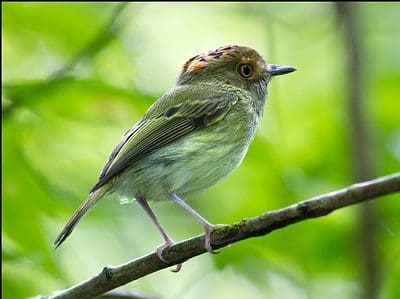
Scale-Crested Pygmy Tyrant
They raise their crests to ward off predators
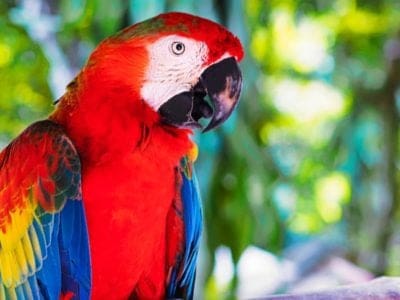
Scarlet Macaw
Like many parrots, the scarlet macaw is capable of vocal mimicry.

Scorpion
There are around 2,000 known species!

Seahorse
Males give birth to up to 1,000 offspring!

Senepol Cattle
Senepol cattle have a distinctive red color and no horns.
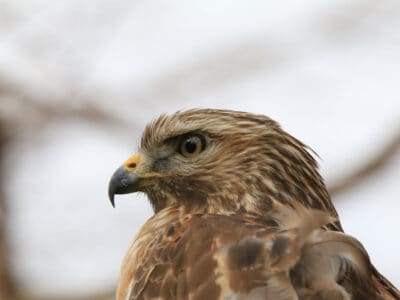
Sharp-Shinned Hawk
In captivity, sharp-shinned hawks can live up to 13 years. However, in the wild, this number is significantly reduced to 3 years!

Sheep
Around 35 million in the English countryside!

Short-Eared Owl
The short-eared owl is one of the most widespread owl species in the world, covering five continents.

Shrew
The spinal column of the shrew Scutisorex somereni is so strong and reinforced that it can support the weight of an adult human.

Shrimp
There are 2,000 different species worldwide!
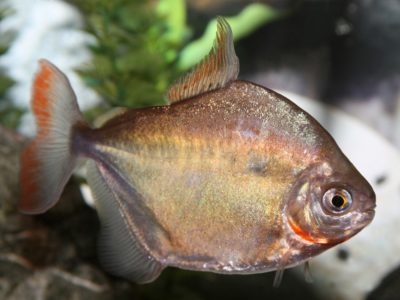
Silver Dollar
Closely related to the Piranha

Skink Lizard
Some skinks lay eggs in some habitats while giving birth to skinklets in other habitats.
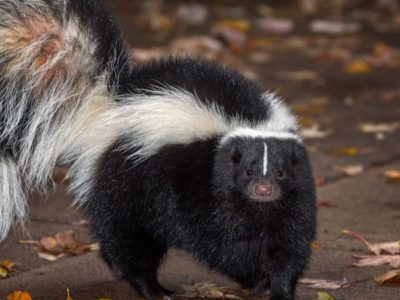
Skunk
Also known as the Polecat!
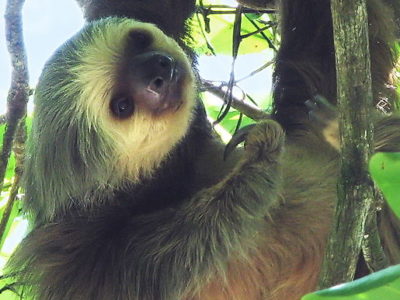
Sloth
It's body temperature is between 30 - 34 degrees!

Slug
They glide around on one foot, which is aided by the slime they produce

Smokybrown Cockroach
Has up to 45 eggs per egg case

Snail
There are nearly 1,000 different species!

Snake
There are around 4,000 known species worldwide

Sparrow
There are 140 different species!

Spider Monkey
Belongs to the only family of primates in the world with full prehensile tails!

Spider Wasp
They prey on spiders to feed their larvae or they parasitize other spider wasps.

Squirrel
Small rodents found in woodlands worldwide!
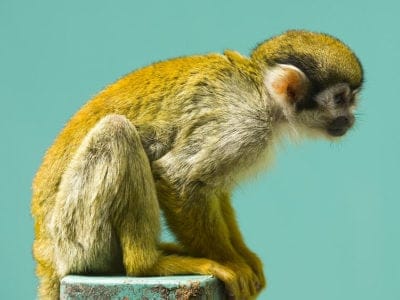
Squirrel Monkey
Lives in groups of up to 500 individuals!

Stick Insect
There are more than 3,000 different species!

Stork
They can’t sing like other birds.

Stupendemys
The largest freshwater turtle known to have ever lived!
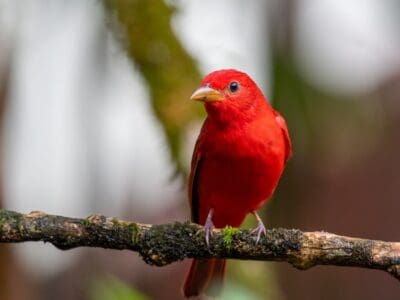
Summer Tanager
They remove bee stingers by rubbing them against a tree
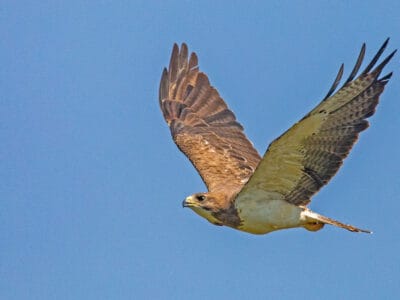
Swainson’s Hawk
Their wings form a “V” shape when flying.

Swan
Populations have been affected by pollution!

Tapir
Most closely related to horses and rhinos!

Tarantula Hawk
Tarantula hawks are excellent pollinators, especially for milkweed.

Termite
Their mounds can be up to 9 meters tall!

Tetra
Native to the freshwater streams of South America!

Thrush
The American robin is called the robin because its red breast reminded European settlers of the robin back in the old country.

Tick
They inject hosts with a chemical that stops them from feeling the pain of the bite

Tiger Beetle
The adult tiger beetle is one of the fastest land insects in the world

Tortoise
Can live until they are more than 150 years old!
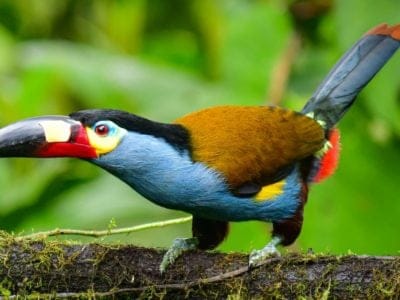
Toucan
There are more than 40 different species!

Tree Cricket
They make music with their wings

Tree Frog
Found in warmer jungles and forests!
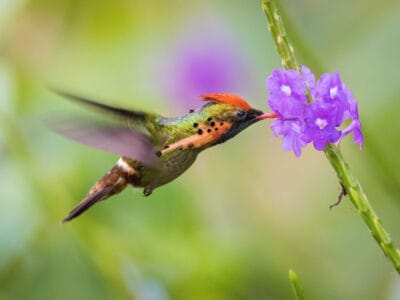
Tufted Coquette
They are tame and easy to approach

Turtles
Some species of aquatic turtles can get up to 70 percent of their oxygen through their butt.

Uakari
Have a very short tail for their size!

Uaru Cichlid
The color of the Uaru cichlid changes during the spawning season
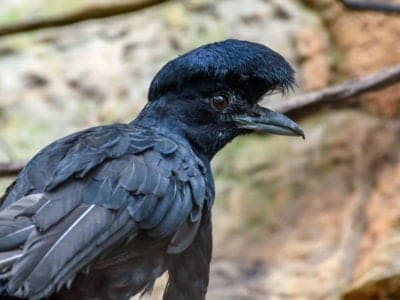
Umbrellabird
Migrates up and down the mountains!

Unau (Linnaeus’s Two-Toed Sloth)
Its top speed is 0.17mph

Upland Sandpiper
They make jerky movements as they walk through the grass, searching for food.

Vampire Bat
Have a heat sensor on the end of their nose!
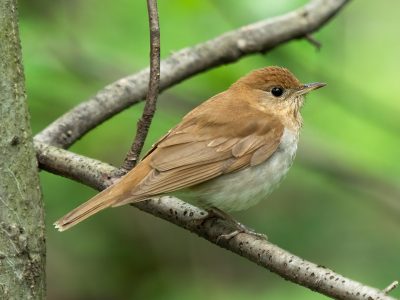
Veery
The veery is named for its sharp "veer" call.
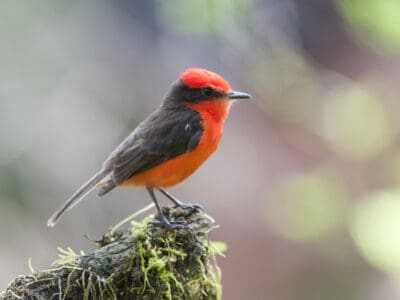
Vermilion Flycatcher
They have a fast song that lasts up to 10 syllables at max.

Vicuña
Vicuñas have some of the softest wool in the entire animal kingdom
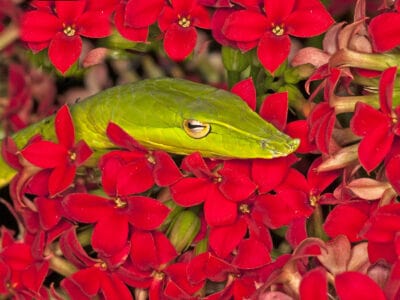
Vine Snake
A slender body and elongated snout give the vine snake a regal look.

Vinegaroon
Vinegaroons can spray 19 times before the glands are depleted

Vulture
There are 30 different species worldwide!

Wasp
There are around 75,000 recognised species!
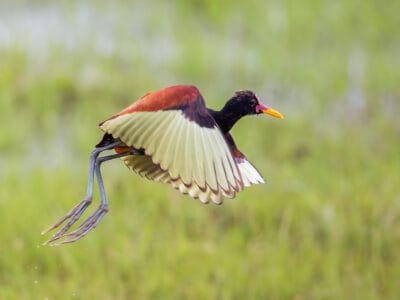
Wattled Jacana
They are typically noisy birds but take on a soft tone with their young.

Whiptail Lizard
Many whiptail species reproduce asexually.

White Ferret / Albino Ferrets
There are two different types of white ferrets!

White-tail deer
White-tail deer are good swimmers
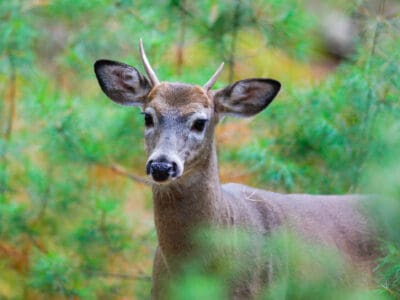
Whitetail Deer
Although deer are herbivores, they will sometimes eat mice and birds when they can catch them.
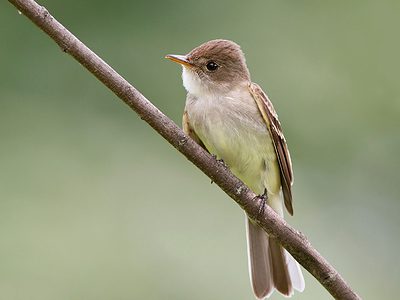
Willow Flycatcher
These birds live in the understory and are named for their propensity for flitting between willows and shrubs.

Wolf Spider
Carnivorous arachnid that hunts its prey.
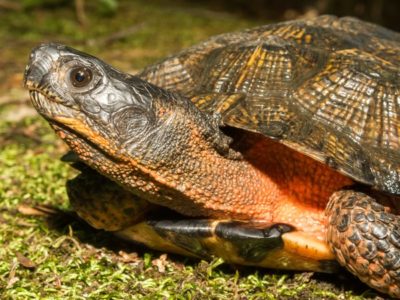
Wood Turtle
Temperature determines the sex of turtle eggs

Woodlouse
This animal can roll up into a ball

Woodpecker
There are 200 different species!
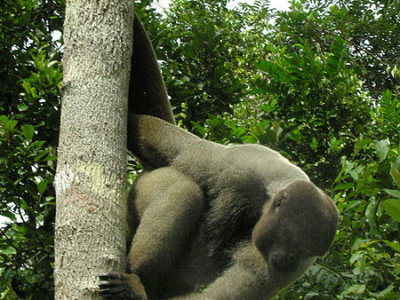
Woolly Monkey
Has a long, strong prehensile tail!

Worm
Doesn’t have eyes.
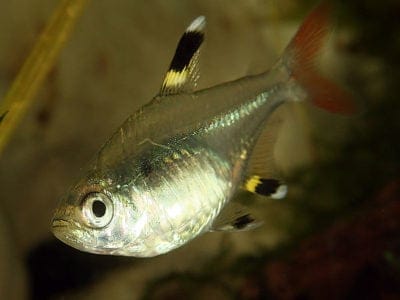
X-Ray Tetra
Yellow, black and white striped fins!
Venezuelan Animals List
- Acadian Flycatcher
- Agouti
- Amazon Parrot
- Amazon Tree Boa
- Amazonian Royal Flycatcher
- Anaconda
- Anhinga
- Ant
- Anteater
- Armadillo
- Armyworm
- Aruba Rattlesnake
- Asian Lady Beetle
- Barb
- Barinasuchus
- Barn Owl
- Barn Swallow
- Basilisk Lizard
- Bat
- Bear
- Bed Bugs
- Bee
- Beetle
- Bird
- Biscuit Beetle
- Black and White Warbler
- Black-Bellied Whistling Duck
- Black Widow Spider
- Blackburnian Warbler
- Blue Tanager (Blue-Grey Tanager)
- Blue Tang
- Booby
- Brazilian Treehopper
- Brown Dog Tick
- Burrowing Owl
- Bush Dog
- Butterfly
- Caecilian
- Caiman
- Camel Cricket
- Canada Warbler
- Capybara
- Carpenter Ant
- Cat
- Caterpillar
- Catfish
- Centipede
- Chestnut-Sided Warbler
- Chicken
- Chilean Recluse Spider
- Cichlid
- Coati
- Cockroach
- Codling Moth
- Collared Peccary
- Common Furniture Beetle
- Common House Spider
- Coral Snake
- Cormorant
- Cow
- Crab
- Crab-Eating Fox
- Crab Spider
- Cricket
- Crocodile
- Crocodylomorph
- Crow
- Cuckoo
- Dickcissel
- Dog
- Dog Tick
- Donkey
- Dragonfly
- Dubia Cockroach
- Duck
- Dung Beetle
- Dusky Shark
- Dwarf Boa
- Eagle
- Earthworm
- Earwig
- Eastern Meadowlark
- Eel
- Electric Eel
- Emerald Tree Boa
- Falcon
- False coral snake
- False Widow Spider
- Fer-de-lance Snake
- Firefly
- Flamingo
- Flea
- Fly
- Flying Squirrel
- Freshwater Eel
- Frog
- Fruit Bat
- Fruit Fly
- Fulvous Whistling Duck
- Gecko
- German Cockroach
- Giant Armadillo
- Giant Leopard Moth
- Glowworm
- Gnat
- Grasshopper
- Gray Fox
- Great Crested Flycatcher
- Great Potoo Bird
- Green Anaconda
- Green Bottle Blue Tarantula
- Guinea Pig
- Gulper Catfish
- Guppy
- Gypsy Moth
- Hamster
- Hare
- Harpy Eagle
- Harris’s Hawk
- Hawk Moth Caterpillar
- Hepatic Tanager (Red Tanager)
- Hercules Beetle
- Heron
- Honey Bee
- Argentine Horned Frog
- Horse
- Horsefly
- House wren
- Housefly
- Howler Monkey
- Human
- Hummingbird
- Huntsman Spider
- Ibis
- Iguana
- IMG Boa Constrictor
- Indigo Snake
- Insects
- Jabiru
- Jacana
- Jack Crevalle
- Jaguar
- Jumping Spider
- Keel-Billed Toucan
- Kentucky Warbler
- Keyhole Cichlid
- Killdeer
- Kingfisher
- Kinkajou
- Ladybug
- Leech
- Leopard Frog
- Lesser Scaup
- Lipstick Albino Boa
- Lizard
- Locust
- Lone Star Tick
- Macaw
- Maggot
- Margay
- Marine Toad
- Mayfly
- Mealybug
- Megatherium
- Mexican Free-Tailed Bat
- Millipede
- Mockingbird
- Mole
- Mole Cricket
- Molly
- Monarch Butterfly
- Mongrel
- Monkey
- Moorhen
- Morpho Butterfly
- Mosquito
- Moth
- Mountain Lion
- Mourning Warbler
- Mouse
- Mule
- Muscovy Duck
- Nematode
- No See Ums
- Northern Harrier
- Northern Screamer
- Ocelot
- Orange Tanager (Orange-Headed Tanager)
- Orb Weaver
- Orchard Oriole
- Osprey
- Otter
- Ovenbird
- Owl
- Ox
- Panther
- Parakeet
- Parrot
- Parrotlet
- Peacock Bass
- Peregrine Falcon
- Pheasant
- Pictus Catfish
- Pigeon
- Amazon River Dolphin (Pink Dolphin)
- Piranha
- Pit Viper
- Poison Dart Frog
- Pompano Fish
- Porcupine
- Praying Mantis
- Puma
- Purussaurus
- Quail
- Quetzal
- Raccoon
- Rainbow Boa
- Rat
- Rat Snakes
- Rattlesnake
- Red-Footed Tortoise
- Red-handed Tamarin
- Redhump Eartheater
- Redtail Catfish
- River Turtle
- Rodents
- Rooster
- Rose-Breasted Grosbeak
- Roseate Spoonbill
- Saber-Toothed Tiger
- Sable Ferret
- Salamander
- Sand Crab
- Scale-Crested Pygmy Tyrant
- Scarlet Macaw
- Scorpion
- Seahorse
- Senepol Cattle
- Sharp-Shinned Hawk
- Sheep
- Short-Eared Owl
- Shrew
- Shrimp
- Silver Dollar
- Skink Lizard
- Skunk
- Sloth
- Slug
- Smokybrown Cockroach
- Snail
- Snake
- Sparrow
- Spider Monkey
- Spider Wasp
- Squirrel
- Squirrel Monkey
- Stick Insect
- Stork
- Stupendemys
- Summer Tanager
- Swainson’s Hawk
- Swallowtail Butterfly
- Swan
- Tapir
- Tarantula Hawk
- Termite
- Tetra
- Thrush
- Tick
- Tiger Beetle
- Tortoise
- Toucan
- Tree Cricket
- Tree Frog
- Tufted Coquette
- Turtles
- Uakari
- Uaru Cichlid
- Umbrellabird
- Unau (Linnaeus’s Two-Toed Sloth)
- Upland Sandpiper
- Vampire Bat
- Veery
- Vermilion Flycatcher
- Vicuña
- Vine Snake
- Vinegaroon
- Vulture
- Wasp
- Wattled Jacana
- Whiptail Lizard
- White Ferret / Albino Ferrets
- White-tail deer
- Whitetail Deer
- Willow Flycatcher
- Wolf Spider
- Wood Turtle
- Woodlouse
- Woodpecker
- Woolly Monkey
- Worm
- X-Ray Tetra
Animals In Venezuela FAQs (Frequently Asked Questions)
What are some animals unique to Venezuela?
Animals native to Venezuela include the capybara, the giant otter, the giant anteater, the crab-eating fox and the white-bellied spider monkey.





